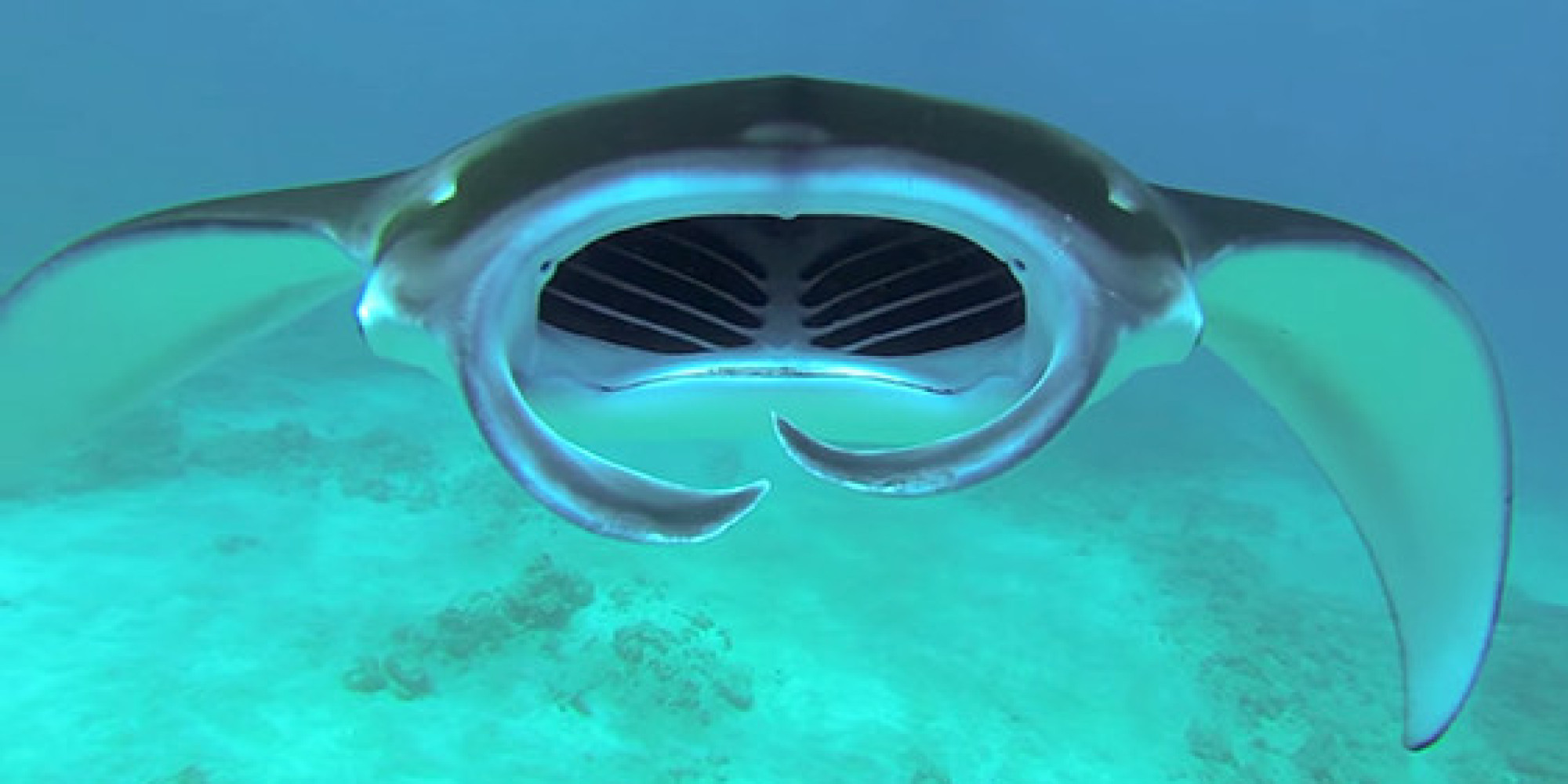
The reef manta ray has a pelagic lifestyle and feeds by filtering sea water in order to catch his favorite food that represents zooplankton. However, there are distinguishing features. ''Manta alfredi'' is similar in appearance to ''Manta birostris'' and the two species may be confused as their distribution overlaps. The markings can often be used to recognise individual fish. The ventral surface is white, sometimes with dark spots and blotches. The color of the dorsal side is dark black to midnight blue with scattered whitish and greyish areas on top head. The manta ray does not have a spiny tail as do the closely related devil rays. It has a small dorsal fin and the tail is long and whip-like. The eyes and the spiracles are on the side of the head behind the cephalic fins, and the 5 gill slits are on the ventral surface. These can be rolled up in a spiral for swimming or can be flared out to channel water into the large, forward-pointing, rectangular mouth when the animal is feeding. It is dorsoventrally flattened and has large, triangular pectoral fins on either side of the disc.Īt the front, it has a pair of cephalic fins which are forward extensions of the pectoral fins. The reef manta ray can grow to a disc size of up to 5 m but average size commonly observed is 3 to 3.5 m.

''Manta birostris'' is similar in appearance to ''Manta alfredi'' and the two species may be confused as their distribution overlaps. Compared to the giant oceanic manta ray, the reef manta ray tends to be found in shallower, more coastal habitats, but local migrations are sometimes reported. The reef manta ray is found widely in the tropical and subtropical Indo-Pacific, but with a few records from the tropical East Atlantic and none from the West Atlantic or East Pacific. birostris'', the status of the reef manta ray as a separate species was only confirmed in 2009.


Reef manta rays are typically 3 to 3.5 m in disc width, with a maximum size of about 5.5 m. Its scientific name is a tribute to the British Prince Alfred, Duke of Saxe-Coburg and Gotha, who was victim of an assassination attempt in Clondarf in Australia at the time the description of the species was published by the director of the Australian Museum Gerard Krefft in 1868. Among generally recognized species, it is the second-largest species of ray, only surpassed by the giant oceanic manta ray. The reef manta ray is species of ray in the family Mobulidae, one of the largest rays in the world.


 0 kommentar(er)
0 kommentar(er)
